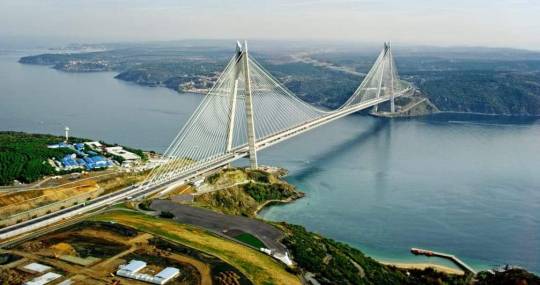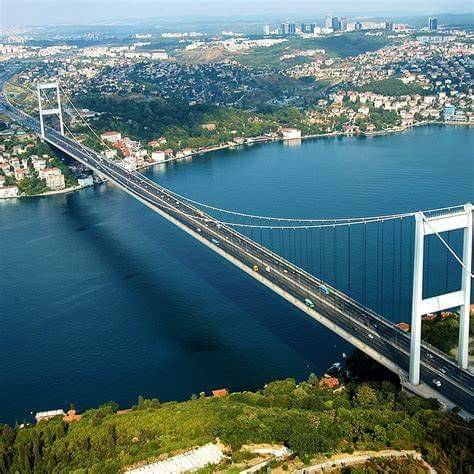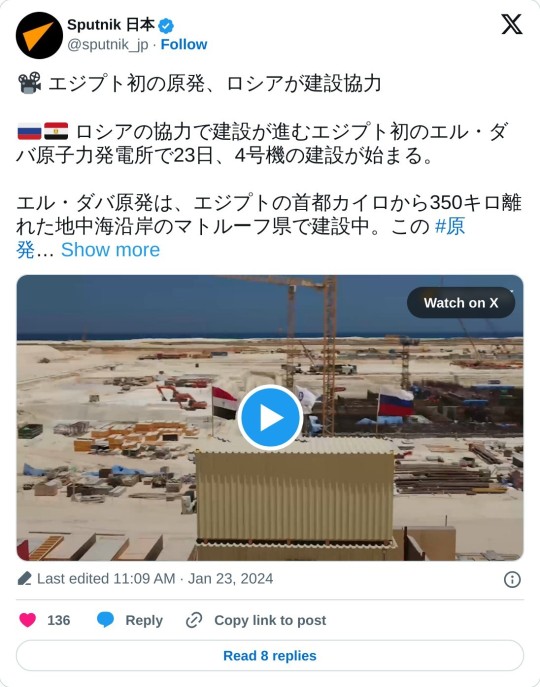#vver
Explore tagged Tumblr posts
Text

human+devil girls
#fanart#my art#dmc#devil may cry#dmc vergil#v dmc5#dmc5#vver#uahh I missed drawing them so much#Vergil in particular#also the sketch for this was like a year old#their skirt lengths used to be swapped lol
61 notes
·
View notes
Text

六月没空画画 拿朋友给我约的薇维生贺图水一水tag()
A vver commission!please don’t use~~
36 notes
·
View notes
Photo










I still have 30GB of GDR/nuclear energy stuff from my thesis drifting uselessly around on my hard drive. Take a look at some pictures.
Did you know that the GDR only used VVER type reactors? Long before the Soviet Union, the GDR had been striving for an intuition of nuclear safety. After Chernobyl, little help was received from the scientific institutions of the Soviet Union to improve the safety of their own nuclear power plants, but cooperation with western Germany was partially extended.
5 notes
·
View notes
Text
Einkäufer
Rosatom fasst im Emsland Fuß, titelt die taz heute über die Einkäufer von Rosatom und macht so -im Gegensetz zur lokalen Clickbait-NOZ deutlich, dass die alten Probleme des alten Jahres auch noch in 2024 mehr als aktuell sind. Die niedersächsischen Behörden haben nämlich die öffentliche Auslegung des Antrags für den Ausbau der Brennelementefabrik in Lingen gestartet. Die taz: “Obwohl 2023 in…

View On WordPress
#ANF#Armenien#Armin Simon#Brennelementefabrik#Bulgarien#China#Christian Meyer#der Ukraine#Finnland#Framatome#Iran#Lingen (Ems)#Rosataom#Slowakei#Tschechien#VVER
0 notes
Note
gamzee x tavros fankid? :3 im a sucker for those two epic art btw!

those guys wwere the reason i wwanted to do these hhehehe wwinged clowwn Σ:]
#homestuck#fankid#gamzee makara#tavros nitram#gamtav#gamzee x tavros#art tag#i gavve up on drawwin de baby vvers
79 notes
·
View notes
Text
Y'all really not getting that Ken moved to start cutting Sh/v out because she literally couldn't have an objective business discussion and instead just wanted to be shady and shit in every interaction (eg the plane where Ken and Rom where trying to prepare for Lukas,,, which she shoulda been preparing alongside them instead of sidelining herself after just being obstructive) because her ego was bruised that her Fairyland idea where her and her brothers are COO together isn't a reality due to the fact that 1. The board wouldn't have gone for it cos the idea of a 3 sibling COO is fr a fairytale. Ken and Rom where correct in saying this and they know the board more intimately then Sh/v. 2. She has no experience at Waystar unlike Ken and Rom who have been a part of the company for years, Ken WAY more intimately so.
Her ego is literally so fragile and bruised rn and has sm internalised misogyny that she fell for Lukas' "You're not like other girls, you're a cool girl 🙃 You're like your dad :)" and is now sided with him cos she CANNOT bear the fact that her dad named Ken as his Successor, not pinky, not daddy's princess.
Like,,, what are you not getting. You want her to have a win? It's not at Waystar that she'll have it. She was leagues ahead in season 1 of where she is now, since she'd actually worked for herself and built her own career instead of just acting entitled and like she should be handed Waystar on a silver platter despite having no experience. Rom and Ken have been a part of Waystar for YEARS. Ken was literally trained by his dad to take over. His initials are fuckn KLR for Killer. He is the eldest between Rom and Sh/v (I don't mention Con here cos he's never frothed for Waystar like the others have). His father wrote for him to take over Waystar and then underlined it.
If you want a win for Sh/v then root for her to achieve that outside of Waystar instead of acting like she deserves to be CEO at Waystar for whatever outlandish purely emotional based reason.
#just had to vent#literally what is in the sauce here#why the fuck are Sh/vvers so deluded????#people making out that she was so smart in getting one over on her brothers in ep 4#MAYBE THIS IS WHY KEN WANTED TO PHASE HER BACK????????#cos she can't be fuckn trusted and she's not professional#that's the objective fact. not subjective.#she fr let her insecurity be used against her + the fact that she's salty that Logan didnt pick her to succeed#cooool
0 notes
Text

sketches based on old shit i dreww
gettin the hang a drawwin myself. or tryin, anywway. last vver looked better imo
#♒︎ eridan ampora ♒︎#☆ original posts ☆#☆ starred ☆#hs eridan#homestuck eridan#eridan ampora#eridan fanart#violetblood#homestuck fictionkin#homestuck kin#homestuck fictive#fictionfolk#fictkin#fictionkind#fictionkin#fictionkin art#alterhuman art#speciesqueer art
10 notes
·
View notes
Text
Tök jó, hogy a roszatom munkaerő, alapanyag és kompetenciaproblémákkal küzd
ráadásul pont a vver-1200-as blokkoknál volt gebasz belaruszban, amit paksba is szánnak
16 notes
·
View notes
Text
History of the RBMK 1000 (Reaktor Bolshoy Moschnosti Kanalnyy): High Power Channel Type Reactor

The RBMK 1000 reactor, the type involved in the Chernobyl Disaster, is a boiling water reactor (BWR) designed in the 1960s at the Kurchatov Institute, the Soviet Union's nuclear science center.
The USSR had placed a priority on developing nuclear power in the late 1950s in its never ending attempts to improve its infrastructure and power its rapidly expanding industrial base. Nuclear reactors are extremely effective at providing high baseload capacity to a power grid, since they are rarely switched off and (depending on the design) can generate enormous amounts of electricity for lower running costs than a more traditional hydrocarbon power plant. Essentially, since they are (almost) always on, they are always providing the grid with a large and extremely reliable supply of energy. It also allowed the USSR to appear at the front of atomic energy, and laude the successes of the ‘Peaceful Atom’. In the atmosphere of the Cold War, peaceful use of atomic power was a key propaganda tool at home and abroad.
The RBMK was selected for construction by the Ministry of Energy over the rival VVER Pressurized Water Reactor in 1968. It was chosen because it was cheaper to construct in terms of material costs, and the components could be mass produced in pre-existing factories for far lower cost. With an enormous power output of 1,000 MWe (megawatts of electricity) it was declared the 'National Reactor' of the USSR. Construction began on the first RBMK in 1970 at the Leningrad Atomic Energy Station. This unit entered service on December 21st, 1973.
Below: A labeled diagram of the core of an RBMK type reactor.

The RBMK 1000 and its successor RBMK-1500 (basically the same reactor with a slightly higher power output) was fraught with safety issues almost from its inception. This was related to several design features and quirks of the reactor, notably the abnormally high positive void coefficient due to steam bubbles in the coolant circuit and the use of graphite as a moderator. Several other even more concerning design flaws would become apparent over the course of its operation, culminating in the explosion of Chernobyl Unit 4 on April 26th, 1986. These revelations have even continued up until present day, with the most recent example being in 2012 when Leningrad Unit 1 (the one mentioned at the end of the previous section) had to be shut down for 18 months to replace graphite moderator blocks that had deformed due to heat and extensive use. This issue has been identified at several other RBMKs.
The reactor type experienced no less than two partial meltdowns in the history of its operation, one at the Leningrad plant and one at the Chernobyl plant (the partial meltdown incident at the Chernobyl plant is different from the explosion and complete meltdown of Unit 4 in 1986). Both of these were serious incidents with not insignificant radioactive releases, but they only partially damaged the respective reactors. The public was not notified in either case, and all information on the design flaws was kept secret by order of the USSR’s highly centralized government.
RBMK construction was halted only in the wake of the Chernobyl Disaster in 1986. Of the 26 reactors approved for construction, only 18 ever entered service. Several modifications were made to the existing RBMKs to eliminate the dangerous flaws that had lead to the 1986 accident. As of 2023, most RBMKs have been shut down and decommissioned. Of the 18 completed reactors, only eight still operate (Three at the Kursk NPP, two at the Leningrad NPP, and two at the Smolensk NPP. All but one of them are scheduled to be shut down and decommissioned by 2030).
The RBMK’s impact has primarily been showing that graphite moderated reactors have far fewer safety features than other water moderated reactors like those in the West. Ironically, the VVER which had been sidelined by the RBMK has enjoyed massive commercial success both in Russia and abroad as an exported design. VVERs are still being actively built and operated in about a dozen countries worldwide.
This is simply an informative blurb on the history of the RBMK-1000 nuclear reactor. I am going to make a more in depth explainer of how the reactor is built as well as an analysis of the physics of the accident at Chernobyl. I will update this post with a link to them when they are complete. My planned deadline is the 26th of April, the anniversary of the explosion. I hope this post has been informative and I am of course happy to answer any further questions and provide any requested information.
#rbmk#nuclear reactor#chernobyl#nuclear power#bwr#disaster#history#autism#nuclear#accidents and disasters#radiation#rbmk 1000#reactor#chernobyl hbo#chnpp#ussr#soviet union#chernobyl disaster
61 notes
·
View notes
Text



Leggo il solito italiano di turno e furbo: "E' inutile costruire il Ponte sullo Stretto, è una struttura nel deserto ed in una zona sismica".
Rispondo al poverino che ama parlare e solo parlare...
Impregilo oggi WeBuild, Astaldi, Antonio Badoni, i ponti in Turchia sul Bosforo parlano tutti chiaramente italiano. Sono tutti ponti strategici per le comunicazioni e lo sviluppo della Turchia, sia verso l'Asia che verso l'Europa. Sono ponti costruiti prima ancora che venissero pronte le rispettive arterie autostradali, quindi hanno permesso lo sviluppo infrastrutturale e commerciale della Turchia.
E la Turchia è terra altamente sismica, lo dimostrano le continue tragedie nel tempo, solo nel 2023 i morti furono 57700, eppure i ponti rimasero sempre intatti e non richiesero alcuna opera di verifica particolare. Non solo ponti, la Turchia è anche reattori nucleari, con le 4 unità VVER-1200 costruite dalla Russia in collaborazione con le principali industrie turche.
Il ponte Fatih Sultan Mehmet, il secondo ponte sul Bosforo, realizzato dal gruppo Salini Impregilo (oggi WeBuild) tra il 1985 e il 1988, è ancora oggi una infrastruttura essenziale per il processo di modernizzazione economica della capitale turca e dell’intera regione, oltre ad essere una grande opera con caratteristiche uniche rispetto al momento storico in cui è stata realizzata.
Il ponte Fatih Sultan Mehmet e l’arteria autostradale che collega l’Europa all’Asia. Perché i grandi ponti non sono solo strumenti per accorciare le due sponde di una città, ma arterie di scorrimento che collegano regioni lontane. L’opera realizzata da Salini Impregilo (oggi WeBuild) non si limita infatti al Fatih Sultan Mehmet Bridge: il ponte è collegato a un’autostrada lunga 247 chilometri che unisce la città di Kinali, in Europa, con quella di Kazanci, in Asia, caratteristica che lo trasforma in una grande infrastruttura di collegamento capace, negli anni, di contribuire in modo determinante allo sviluppo della capitale turca.
Il Ponte dei Martiri del 15 luglio è uno dei tre ponti di Istanbul che attraversano lo stretto del Bosforo e che permettono di collegare l'Europa con l'Asia.
Il ponte si trova tra Ortaköy (sul lato europeo) e Beylerbeyi (nella parte asiatica). Si tratta di un classico ponte sospeso a cavi parabolici e impalcato sottile di tipo aerodinamico, con piloni in acciaio e pendini di sospensione inclinati che formano maglie triangolari. La sua lunghezza complessiva è di 1.510 metri per 39 m di larghezza. La distanza tra le torri (campata principale) è 1.074 m e la loro altezza sul livello della strada è di 105 m. Il ponte sul Bosforo era il quarto ponte sospeso al mondo per la lunghezza della campata, quando fu completato nel 1973 era il più lungo al di fuori degli Stati Uniti. Fu realizzato dagli ingegneri Roberts e Brown con la collaborazione dell'italiano Almerico Meomartini. Uno dei due piloni in acciaio è stato realizzato dalla ditta Antonio Badoni Lecco.
Il ponte di Yavuz Sultan Selim, chiamato anche il "terzo ponte sul Bosforo", è uno dei tre ponti di Istanbul, in Turchia che attraversano lo stretto del Bosforo e che permettono di collegare l'Europa con l'Asia. É il ponte stradale e ferroviario a campata unica più lunga del mondo. È stato inaugurato il 26 agosto 2016[2]. Il ponte si trova tra Poyrazköy (sulla sponda asiatica) e Garipçe (sulla sponda europea). È stato costruito da un consorzio denominato ICA composto dall'impresa italiana Astaldi, che ha il 33,33%[5], e dalla turca Içtas.
Fernando Arnò.
3 notes
·
View notes
Text
yoooo eridan pozted SK content again
yt vver beloww
youtube
19 notes
·
View notes
Text
Nem jön ilyen orosz technológia Paks 2-re. Kizártnak tartom ezen a ponton.
4 notes
·
View notes
Text


俩小孩
22 notes
·
View notes
Text

エル・ダバ原発は、エジプトの首都カイロから350キロ離れた地中海沿岸のマトルーフ県で建設中。この #原発 には第3世代+(プラス)原子炉「VVER-1200」4基が建設され、総発電量は約480万キロワットとなる予定。 計画における��国の協力は2015年に始まった。ロシアは建設協力のほか、完成後の核燃料の供給や保管の支援も担う。また、稼働開始後の最初の10年は、人材育成やメンテナンスなども行う。4つの原子炉は全て、2030年までに稼働が開始する予定。 エジプトは、このプロジェクトを持続可能な開発戦略の重要な部分とみている。第一に、エジプトのエネルギー供給システムの信頼性を向上させ、国の経済や産業界からの電力需要の増加に対応できるようになるからだ。さらに、エジプト政府にとって貴重な炭化水素資源である石油や天然ガスの保全・無駄のない利用にも貢献することになる。
2 notes
·
View notes
Note
H1 JU5 W4NN4 M4K3 5UR3,,, U H4V 74G5 F0R 8*35 F1L73RD R173? 1 W4N7 77W0 M4K3 5UR3 CUZ 1 KN0 U D0N7 L1K3 3M 4ND 1M P0571GN 4 P1C (1M 74GG1NGG 17 DW) 50RY F0R M3N710NNG 7H3M 1 JU57 W4N4 M4K3 5UR3 1 DD0N7 M4K3 U UP537 0R 4NY7H1G /G3N
-🥩🧠
i do!! dont wworry i really appreciate u wwarnin me!!!! a "tw b*e" wwithout the asterisk is fine!!
#i also havve the ones wwithout the tw like b or bs but the actual wword u don havve to use the tw vvers#ask tag#mootuals
1 note
·
View note
Text
Parliament approves controversial purchase of Russian nuclear reactors from Bulgaria

Ukraine’s parliament voted in favor of buying two Russian-made reactors from Bulgaria for the Khmelnytskyi Nuclear Power Plant, lawmaker Yaroslav Zhelezniak said on Feb. 11.
President Volodymyr Zelensky urged the lawmakers last week to approve the project, calling it a “key to energy independence."
Bulgaria has offered to sell its unused 15-year-old VVER-1000 reactors and other equipment for units 3 and 4 of the western Ukrainian nuclear power plant as Ukraine faces regular Russian attacks against its energy grid.
Some lawmakers have criticized the deal, arguing that the reactors are obsolete and expensive. The parliament has long struggled to pass the law, prompting Bulgaria to extend the deadline for concluding the deal until March.
The price of the two reactors was set at $600 million, said lawmaker Andrii Zhupanyn.
Nuclear power is key in sustaining Ukraine’s energy grid, covering more than half of the country’s electricity consumption. Russian missile and drone attacks have dealt devastating damage to Ukraine’s thermal and hydroelectric generating capacity, necessitating regular emergency shutdowns.
The Khmelnytskyi plant, one of the three remaining operational nuclear stations in Ukraine-held territories, is being expanded to offset the loss of the Zaporizhzhia Nuclear Power Plant, currently under Russian occupation.
The news comes as Energy Minister Herman Halushchenko, who has advocated for purchasing Russian-made reactors, is under mounting political pressure. Opposition lawmakers accused the minister of “systemic corruption in the energy sector,” “failure to protect parts of the energy infrastructure,” and “lies and manipulations” and called for his dismissal.
Updated: Russian strike damages Naftogaz facilities in Poltava Oblast
The attack, which included strikes on gas infrastructure overnight and continued into the morning, has further strained Ukraine’s energy grid.

The Kyiv IndependentTim Zadorozhnyy

0 notes